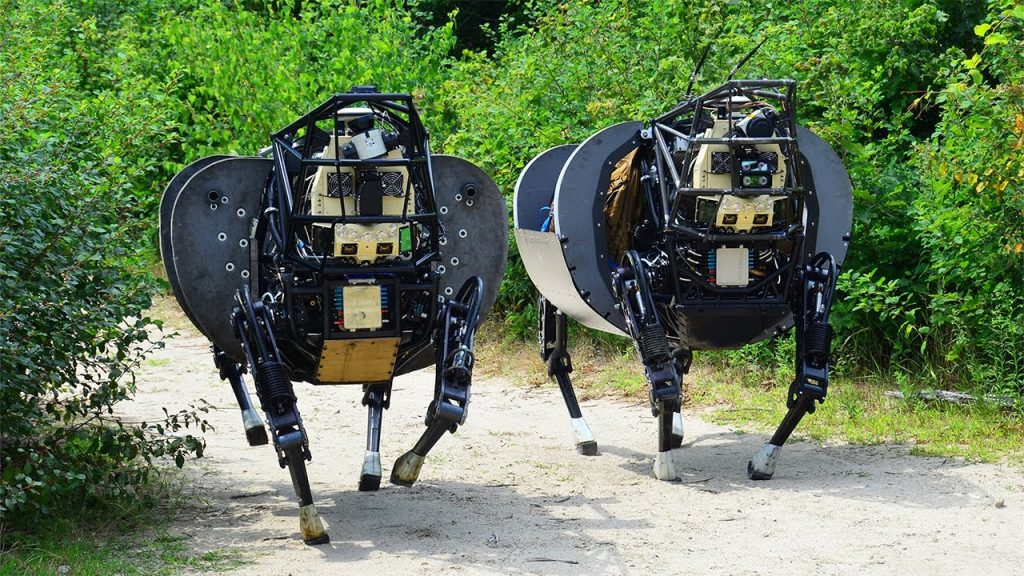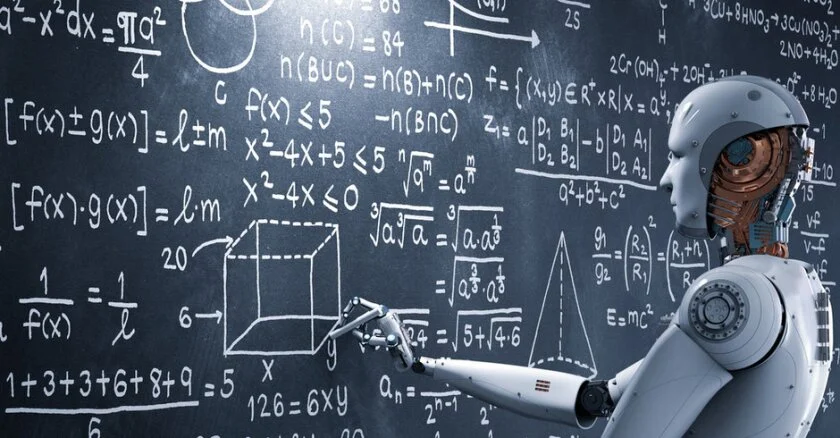Every day, sifting through the vast metaverse that is the Internet, I see new misinformation posted. It appears designed to mislead and misdirect people, strewn out into every corner. Occasionally, I’ll scroll down to find the comment sections filled with people who seem to have fallen for total nonsense. Everywhere, people are posting copied, botted fragments or memes generated from scraping the responses of others. I wonder what the point is of these provably fake posts. Is it purely for entertainment? To make money, to induce certain emotion, to pull political strings in a particular direction? Or perhaps just to pass the time with no point at all? I am concerned about this type of nonsensical mental crowding, as everything we see affects us, seeding thoughts in our heads. Inundated as we are with information, words and images pressed against our eyelids on every platform, we still respond, even subconsciously. We are in dire need of a guide, a person to help us to discern truth from fiction—a teacher.
As we slog through the immense trove of words and images that the Internet is generating at a phenomenal clip, we risk our attention spans shrinking minute by minute, hour by hour. We have come to expect a heaping side order of slop alongside whatever we actually seek. Numerous recent studies have shown that we as a society are losing critical thinking, reading and writing skills; we are increasingly losing the ability to tell fact from fiction. Now we have a growing threat to our attempt to build understanding in society through our schools and classrooms: the introduction of AI into teaching and learning. It is happening so quickly, we risk an avalanche of misinformation overtaking our students with little chance of regaining control. We must take action and set strong parameters around these systems quickly, or our society teeters on the brink of imploding. Seemingly everywhere these days, we see technologists stating that they intend to replace real, human intelligence with Artificial Intelligence. They intend to replace human teachers—with human emotions and the ability to think and connect—with robots. We need to wake up—this is a crisis in the making! My friends, when we lose our teachers, we have lost everything.
“Like the last human teachers,” sings Adrienne Lenker of Big Thief, on “Simulation Swarm,” weary and wary of authoritarian technocracy, of humanity weakening to make way for computers. Our lives are overwhelmed by realizations of modernity and its ever-evolving (and ever more intrusive) technology. We are witnessing a critical moment in our culture, where automatons who provide curated ‘knowledge’ and ‘insight’—little more than regurgitation synthesized by algorithms from vast libraries—replace our dwindling human teachers. Like Google, the algorithms don’t have any idea what is true or right, just what is most popular in their scraped-together data.
Learning is a gift that every human receives. We have the ability to go from observation, to concept, to synthesis, to analysis, to evaluation in order to figure out what is best for us—what is in our best interest. This is a gift we must not readily give away simply because a machine offers to do it for us. Being able to think is a crucial part of being human. Being sentient sets us apart from other creatures, and the way we think also makes us different from each other. We can make decisions, we can come up with new ideas, we can solve problems in our heads and by talking to other people. It’s a big part of what makes us human.
“Once again, empty horses…follow red, crooked courses,” Lenker laments in her song, alluding to the robotic shells we have created to follow in our footsteps. AI is not a real replica of human creativity. It is only able to imitate and interpolate what has already been fed into it. This song is cautionary also: anything made to copy humanity may inevitably reproduce its flaws. Things we program to replace human thinking may replicate only our weaknesses, not our strengths.

How can we possibly ever make something better than us? That question itself should make us consider deeply what the intended end goal of these systems is. The strength of human innovation is in our unpredictability, our imagination. A model that generates ‘new’ things based on our own inputs, countless human words and images, cannot be actually making anything ‘new’, even if the algorithm tells it to try. Even if it could generate something that no human had produced before (it’s possible, I suppose), it would not have any way of conceiving or truly evaluating it in the way that a human could. Because it cannot develop any of its own values, the only value it could hold would be given by humans. Would Hitler really make a delightful dinner guest? Well, that depends on what ‘value’ someone encoded into the program. For me, the answer would clearly be “no.”
When we subjugate our creative desires and feed any instinct for invention into a computer that, in turn, feeds on already-pulverized, often-inaccurate material, nothing will ever advance or be truly different. Should all of our art be chewed up and spat back out at us? Art has meaning and value simply when we attribute that to it, and whatever amount of skill and time taken to produce it may be irrelevant. Art is a communication tool. What message would a computer want to send to us? Computers are awesome? I’ll pass on that message, thanks.
To be clear about what we are talking about here in terms of Artificial Intelligence, as we contemplate the replacement of teachers with AI in our classrooms, what captures the current zeitgeist is not actually pure AI. The conversation currently is primarily about LLMs. LLMs are large language models, which are the engines of things like ChatGPT and Google Gemini. They are merely predictive language generators, trying to know us so well they can finish our sentences. They anticipate what most people would say next following something that was said before. For example, the student-popular ChatGPT, Generative Pre-trained Transformer, is just that: generative. Generative AI is not real ‘artificial intelligence’ as it does not generate on its own intellect. Instead it draws from sources all over the internet to form its ‘intelligence,’ really just neural networks for words. Language models so large you can hold conversation with it, because it so well predicts what word would most likely come next if a human were to string a set of words together. However, just as a neural network’s model for learning adapts to perceived ‘mistakes’ by rerouting (or ‘re-generating’), you may notice that if you tell LLMs such as ChatGPT they are wrong, they will ‘correct’ the mistake, regardless of whether it was true. The language model does not know anything at all. And, if you rely on these models for information, then, sadly, neither do you. As much as they are information machines, they are also misinformation machines.
Our human teachers play a vital role in educating us, in preparing our young people for an uncertain future by helping them to develop the skills to seek the truth and understanding. While AI can serve as a helpful classroom supplement, it cannot supplant the role of human educators. AI fundamentally does not do the same thing that a human teacher can do, and won’t ever be able to. AI in educational settings is fraught with countless shortcomings. Though you can sometimes ask ChatGPT a question and get the answer in seconds, frequently it pulls the wrong result. And it will have no way of discerning truth from fiction; it is ‘truth-neutral.’ Computers do not understand the idea of being incorrect—they only produce and consume. They do not know how to adapt to the needs of different students in a classroom, because those students have human needs, and computers are not and will never be humans. Why has human involvement remained critical to student success? It is because of how we connect, and how we shape each other’s lives.

AI cannot develop anyone’s unique voice and is nothing unique itself. It has no emotional intelligence. AI detects keywords but cannot translate feelings. It can only function within the confines of information it has been fed; it is incapable of going beyond its data set to create new content, or innovate. As technology continues rapidly developing our world, AI will remain in use—as a tool, a crutch, an impersonal assistant, but hopefully not everyone’s teacher.
AI cannot replace the human relationship between students and teachers, the emotional support, the complex connection and understanding of individual needs. Many AI tools are rightfully seen as innovative and may have a place in modern education, but their best use is as complementary resources. At this time we need good teachers more than ever, more abandoning the profession due to its inherent challenges. We cannot accept the notion that AI can make up for a lack of available teachers.
As the tech world surges onward in its quest for ‘Artificial General Intelligence’ (unachievable fully, but continually touted as a goal through misleading statements regarding intelligence), we risk losing even more human interaction than we already have over the past few decades. AI cannot offer spontaneous, meaningful interactions that often happen at school, between students and teachers or their peers. These exchanges are key to socioemotional development and building relationships at a young age. Excessive dependence on AI is already contributing to the erosion of critical thinking and essential social skills. In classrooms where AI is overused, students miss out on chances to practice communication, problem-solving, and teamwork in real-life situations. In the same place where children develop higher cognition and executive function, they also need to mature socially. Human teachers not only impart academic knowledge but also help students learn how to work together, negotiate and compromise, and develop skills vital for success both personally and professionally later in life.
Let us encourage each other to relate again. We have opportunities still to teach and learn from our fellow humans every day. Why resort to AI instead when we are all here together on this earth? Technology brings us together despite physical distance, gives us the chance to interlink. Are we so afraid of talking to one another? Do we think robots safer because humans are unpredictable and finite? “I want to drop my arms, and take your arms, and walk you to the shore,” Adrienne Lenker concludes, craving mortal connection and support. For all of us, our whole lives, it goes both ways—we uplift, and in exchange we are uplifted; we teach, we are taught. This give and take is invaluable, and foundationally human.
The true power of education lies not just in the content, but in the way it is taught. Generative AI cannot act as the necessary intergenerational connection to educate our youth. Our society’s goal should not simply be for AI teachers to prepare our next generations for an AI-run future. What would be the point of having humans in the mix at all, then? We don’t have to leave behind technology to preserve human interaction, but remember its importance. Human teachers provide empathetic relationships, critical thinking practice, avenues for creativity, and essential human contact. Our teachers are more than just instructors—they are also mentors, role models and leaders who guide their students to grow and become guardians and stewards of our future. Let’s make sure they remain at the very center of our culture and our young peoples’ worlds. They are depending on us to give them the absolute best preparation to lead their best possible lives. They need human teachers who care for them and who help them to see and to discover the truth.



http://wish-club.ru/forums/index.php?autocom=gallery&req=si&img=5145